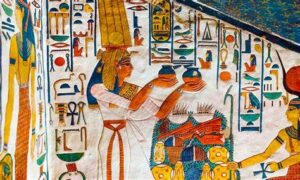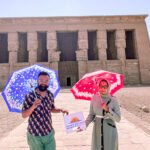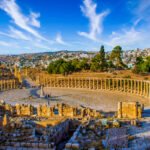The phrase “21KB Ancient Egypt“ evokes a compelling blend of ancient mystery and modern efficiency,
distilling the rich, multifaceted history of one of humanity’s greatest civilizations into concise, impactful knowledge. Ancient Egypt, with its awe-inspiring pyramids, enigmatic hieroglyphs, and unparalleled cultural achievements, continues to fascinate the world. Now, in an age where information is consumed rapidly, “21KB Ancient Egypt” offers a fresh approach to understanding this timeless civilization in bite-sized, memorable pieces.
In this blog, we’ll explore the wonders of Ancient Egypt through the lens of modern storytelling, focusing on the essential knowledge that makes this civilization eternally captivating. Let’s dive into how “21KB Ancient Egypt” can educate, inspire, and connect us to the past.
Why “21KB Ancient Egypt” Matters in the Digital Age
The term “21KB” might remind you of a small data file, compact yet capable of holding significant value.
Applying this concept to Ancient Egypt, it suggests condensing centuries of history, culture, and achievements
into a streamlined format that’s both easy to digest and endlessly fascinating.
Modern audiences crave concise, engaging content, whether it’s for learning, entertainment, or inspiration.
With “21KB Ancient Egypt”, the goal is to offer just enough depth to spark curiosity while keeping the
information accessible and relevant.
A Journey Through “21KB Ancient Egypt”: Key Highlights
To encapsulate Ancient Egypt into “21KB,” here are some must-know facts and fascinating tidbits that define this remarkable civilization.
1. The Nile: The Lifeline of Civilization
The Nile River was central to Ancient Egypt’s prosperity. Its predictable flooding provided fertile soil, enabling agriculture to flourish and creating the foundation for one of history’s most advanced societies.
2. Monumental Architecture
The pyramids of Giza are the epitome of architectural genius. These massive tombs, especially the Great Pyramid, remain one of the Seven Wonders of the Ancient World and showcase unparalleled engineering skills.
3. Hieroglyphics: The Language of the Gods
Hieroglyphics, a combination of symbolic and phonetic writing, were not only a means of communication but also an art form. The Rosetta Stone, discovered in 1799, unlocked the ability to read these ancient texts, offering insights into Egyptian society.
4. The Afterlife: A Journey of the Soul
Belief in the afterlife shaped much of Egyptian culture. From the intricate mummification process to the Book of the Dead, Ancient Egyptians invested deeply in ensuring safe passage to eternity.
5. Female Pharaohs: Breaking Barriers
Leaders like Cleopatra, Hatshepsut, and Nefertiti were trailblazers who wielded immense power in a male-dominated society, leaving legacies that resonate even today.
6. Medicine and Science
Egyptians were pioneers in medicine, astronomy, and mathematics. They performed surgeries, developed a 365-day calendar, and used geometry to construct their awe-inspiring monuments.
7. Everyday Life
From lavish feasts to simple bread and beer, daily life in Ancient Egypt was a mix of hard work and celebration. Artifacts and murals provide glimpses into the lives of farmers, artisans, and royalty alike.
How “21KB Ancient Egypt” Connects the Past with the Present
In today’s fast-paced world, compact, impactful knowledge is more valuable than ever. The concept of “21KB Ancient Egypt” bridges the gap between historical depth and modern accessibility, offering:
1. Quick Learning for Busy Lives
With the condensed format of “21KB Ancient Egypt”, anyone can quickly grasp essential facts about this fascinating civilization. Whether it’s for education or casual interest, this approach provides a solid foundation.
2. Inspiration for Creative Industries
Ancient Egypt’s art, mythology, and design have inspired countless modern creations, from movies and video games to fashion and architecture. “21KB Ancient Egypt” serves as a springboard for creative minds seeking timeless inspiration.
3. Accessible to All Audiences
By focusing on the highlights, “21KB Ancient Egypt” makes history accessible to a broader audience, including younger generations who might find traditional history lessons daunting or dull.
The Role of Technology in “21KB Ancient Egypt”
Modern technology plays a crucial role in bringing “21KB Ancient Egypt” to life. Here’s how:
Virtual and Augmented Reality
Platforms like VR and AR allow users to explore ancient sites such as the Great Pyramid of Giza or the Temple of Karnak from anywhere in the world. These immersive experiences offer a deeper connection to history.
AI in Hieroglyph Translation
Artificial intelligence is revolutionizing the study of Ancient Egypt by rapidly translating hieroglyphs, opening new doors to understanding ancient texts and uncovering forgotten stories.
3D Reconstruction
3D printing and digital modeling are preserving Egypt’s monuments, ensuring their legacy remains intact for future generations to study and admire.
Educational Apps and Games
Interactive apps bring the history of Ancient Egypt to life through engaging formats. These tools make learning about the civilization fun and interactive for all ages.
The Commercial Appeal of “21KB Ancient Egypt”
Ancient Egypt’s enduring popularity has led to a variety of commercial opportunities. Here’s how businesses are tapping into the allure of “21KB Ancient Egypt”:
Tourism
Travel agencies offer curated tours to Egypt’s iconic sites, such as the Valley of the Kings, Abu Simbel, and the Nile River, making Ancient Egypt a bucket-list destination.
Jewelry and Fashion
Designs inspired by Egyptian motifs like ankhs, scarabs, and lotus flowers are timeless, gracing everything from high-end jewelry to casual wear.
Museum Exhibitions
Blockbuster exhibits like the treasures of Tutankhamun draw millions of visitors, offering a commercial and educational avenue for exploring “21KB Ancient Egypt” in a tactile way.
Pop Culture
Movies, books, and games often use Ancient Egypt as a backdrop, leveraging its rich stories and visual appeal to captivate audiences.
How You Can Embrace “21KB Ancient Egypt”
If you’re intrigued by “21KB Ancient Egypt”, there are plenty of ways to explore and experience this incredible civilization:
- Travel to Egypt: Witness the grandeur of the pyramids, tombs, and temples firsthand.
- Visit Museums: Explore Egyptian collections at local and international museums for a closer look at artifacts and history.
- Engage with Online Content: From YouTube documentaries to blogs and podcasts, digital platforms offer endless resources on Ancient Egypt.
- Try Digital Experiences: Immerse yourself in virtual tours or educational games that bring Ancient Egypt to life.
- Bring It Home: Incorporate Egyptian-inspired decor, jewelry, or fashion into your daily life for a touch of timeless elegance.
People Also Ask
When Did Ancient Egypt Become a Civilization?
Ancient Egypt officially became a unified civilization around 3100 BCE. This was the moment when King Narmer (sometimes called Menes) united Upper and Lower Egypt, marking the start of the Early Dynastic Period.
This unification laid the groundwork for a centralized government, advanced irrigation systems for farming, and a shared cultural identity. The fertile banks of the Nile River, often referred to as the “Gift of the Nile,” enabled the growth of this early civilization by providing the resources needed for agriculture, trade, and stability.
How Long Did Ancient Egypt Last?
The timeline of Ancient Egypt is one of the longest in recorded history. It lasted for approximately 3,000 years, from around 3100 BCE (unification under King Narmer) to the fall of the Ptolemaic dynasty with the death of Cleopatra VII in 30 BCE.
This impressive stretch of history is divided into three major periods:
- The Old Kingdom (2686–2181 BCE): Known as the “Age of the Pyramids,” this era saw the construction of the Great Pyramid of Giza and advancements in art and architecture.
- The Middle Kingdom (2055–1650 BCE): A time of cultural and economic revival, marked by literature, trade, and impressive irrigation projects.
- The New Kingdom (1550–1070 BCE): The height of Egypt’s power, characterized by legendary pharaohs like Hatshepsut, Akhenaten, Tutankhamun, and Ramses II.
In between these periods were Intermediate Periods, times of political fragmentation and instability. Despite these challenges, Ancient Egypt’s influence and culture persisted for millennia.
What Dynasty Ruled Egypt in 639 BCE?
By 639 BCE, Egypt was under the control of the Saite Dynasty, also known as the 26th Dynasty. This dynasty marked a resurgence of Egyptian independence after years of foreign domination.
The Saites, led by kings like Psamtik I, sought to restore the grandeur of Egypt’s past. They rebuilt temples, encouraged the study of ancient texts, and re-established trade routes. However, their independence was short-lived, as Egypt fell to the Persian Empire in 525 BCE.
Who Ruled Egypt in 332 BCE?
In 332 BCE, Egypt entered a new chapter of its history under the rule of Alexander the Great. After defeating the Persian Empire, Alexander was welcomed by the Egyptians as a liberator.
He founded the city of Alexandria, which became a hub of culture, learning, and commerce. Although Alexander’s rule was brief—he died in 323 BCE—his influence paved the way for the rise of the Ptolemaic dynasty, a Greek-speaking lineage that ruled Egypt for nearly 300 years.
What Happened in Egypt in 2200 BCE?
The period around 2200 BCE marks the end of the Old Kingdom and the beginning of the First Intermediate Period (2181–2055 BCE). This was a time of political fragmentation, economic decline, and social upheaval.
Several factors contributed to this collapse, including:
- Weakening central authority under the pharaohs.
- Climate changes that caused poor Nile flooding, leading to famine.
- Increased power of local governors (nomarchs), who challenged the authority of the central government.
Despite this period of instability, the legacy of the Old Kingdom—especially its monumental architecture and centralized administration—continued to influence later periods in Egyptian history.
How Did the Old Kingdom Influence Egypt’s History?
The Old Kingdom (2686–2181 BCE) is often referred to as the “Age of the Pyramids” because of its monumental contributions to architecture, governance, and culture. Its influence can be seen in several key ways:
- Architectural Legacy: The construction of the pyramids, particularly the Great Pyramid of Giza, set a standard for engineering and inspired future generations of builders.
- Centralized Governance: The Old Kingdom established a strong central government under the pharaohs, creating administrative systems that would be emulated for centuries.
- Artistic and Cultural Foundations: Art from the Old Kingdom, including statues and tomb reliefs, set stylistic standards that persisted throughout Egyptian history.
- Religious Practices: The Old Kingdom emphasized the divine nature of the pharaoh and established rituals surrounding the afterlife, which became central to Egyptian religion.
Even as Egypt evolved over millennia, the innovations and cultural achievements of the Old Kingdom remained a touchstone for its identity.
Bringing Ancient Egypt to Life in the Digital Age
The concept of “21KB Ancient Egypt” is about making this incredible history accessible and engaging for modern audiences. Whether through technology, storytelling, or simplified summaries, it allows us to connect with Ancient Egypt in ways that fit our fast-paced lives.
Key Ways to Explore “21KB Ancient Egypt”:
- Virtual Experiences: Take a VR tour of the pyramids or explore a digital reconstruction of Luxor Temple.
- Interactive Apps: Learn hieroglyphs, solve archaeological puzzles, or play historical strategy games inspired by Ancient Egypt.
- Quick Reads: Dive into blogs, articles, or social media posts that distill Egyptian history into fascinating, bite-sized content.
Final Thoughts: Why “21KB Ancient Egypt” Matters
Ancient Egypt’s story is far too vast to capture in a single blog post, but the “21KB Ancient Egypt” approach ensures we can still engage with its most significant moments. By answering key questions like “How long did Ancient Egypt last?” and “Who ruled Egypt in 332 BCE?”, we gain a deeper appreciation for its enduring impact on the world.
Whether through its architectural wonders, cultural innovations, or the timeless allure of its pharaohs, Ancient Egypt remains a source of inspiration and fascination. Let’s continue to explore and celebrate its incredible legacy, one “KB” at a time.
Conclusion: The Enduring Legacy of “21KB Ancient Egypt”
“21KB Ancient Egypt” isn’t just a catchy phrase; it’s a modern way to experience and understand one of history’s most iconic civilizations. By condensing the vastness of Ancient Egypt into digestible, engaging content, we ensure that its legacy remains alive and relevant in our fast-paced, digital world.
Whether you’re a history enthusiast, a creative professional, or simply someone curious about the past, “21KB Ancient Egypt” offers an invitation to explore, learn, and be inspired. Let the timeless wisdom and beauty of Ancient Egypt continue to captivate our imaginations for generations to come.




